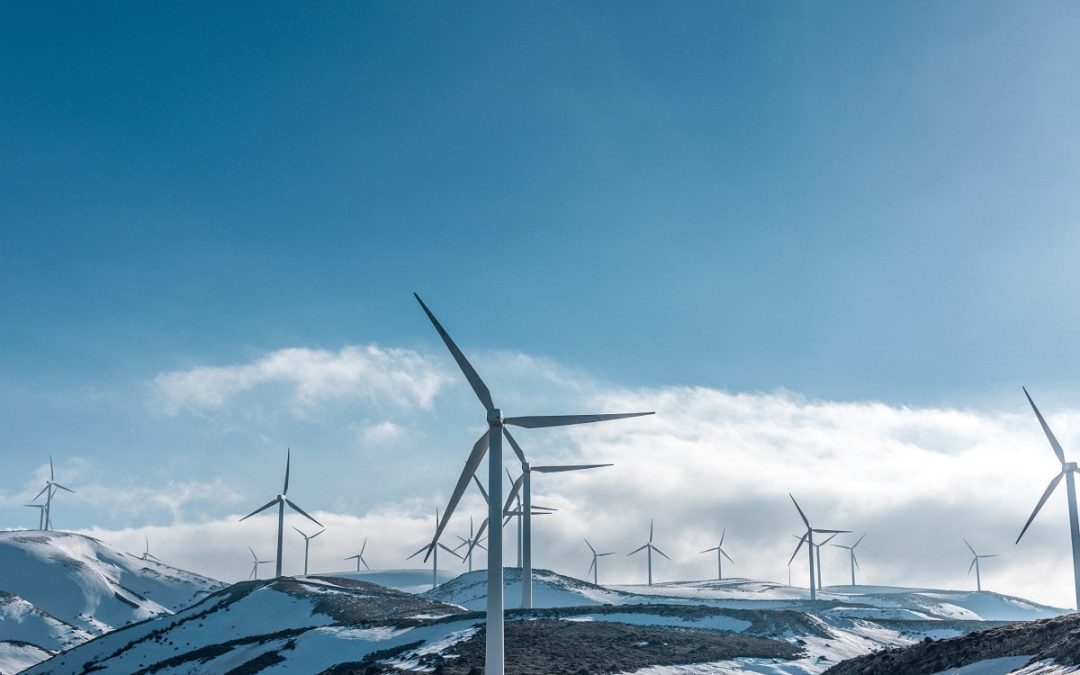Wind turbines are one of the best ways to transform a renewable energy resource into electricity. They work by harnessing the kinetic energy stored in the wind to rotate their large rotor blades. This in turn spins a generator, which creates electricity.
However, for a wind turbine to generate the greatest amount of electricity it needs to capture the maximum amount of energy from the wind. This is where measuring wind speed becomes important.
The wind speed and the quantity of electricity you can generate will affect your decisions when developing a wind farm.
Why Wind Speed Is So Important
As the wind speed increases, the amount of power that a wind turbine can produce also increases. Conversely, as wind speed decreases, the amount of power that a wind turbine can produce decreases as well.
What is important for potential wind farm developers is that the greater the average wind speed, the greater revenue you degenerate from your site.
So how do we go about measuring wind speed?
Measuring Wind Speed for Wind Turbines
To measure wind speed, turbines or met stations are equipped with an anemometers – these devices measure both the velocity and direction of the wind. The anemometer is typically mounted on top of the wind turbine or tower and consists of several cups that spin as the wind blows.
The rate at which the cups spin is directly proportional to the wind speed. For example, a quality device will provide a wind speed reading accuracy of ±0.5 m/s (±2 km/h or ±1mph).
Predicting Future Wind Speeds
Current wind speed data supplied by an anemometer is not enough to grasp a realistic energy yield of your turbines or viability of your project.
The speed and stability of your site’s wind will be impacted by seasonal fluctuations, as well as the long-term consequences of climate change and other environmental factors.
Wind speed data can be used to create a wind speed profile for a specific location. This information can then be used to predict the amount of power that a wind turbine can produce at that location.
However, collecting adequate information to guide a project can take a long time and be very costly.
This is because obtaining this data has historically relied on the installation and operation of a meteorological (Met) stations. This equipment will need to collect data for a year so it can record seasonal changes. The installation and management of these stations can cost a developer up to £30,000.
Fortunately, WindCheck uses advanced simulation models that gives you this data in a matter of days and at a fraction of the cost. These models are known as simulated met stations, or sometimes referred to as virtual met stations.
These models help provide accurate low-cost assessments that can steer the development and growth of a wind farm project.
The Value of Wind Resource Assessments and Simulated Met Station
A wind resource assessment is important for wind farm operators because it provides essential information about the potential electricity their site can produce and revenue they can generate. This information is then used to determine whether the site is viable.
By knowing the average wind speed, operators can optimise their wind farm site to harness more of the wind more effectively.
In addition to improving the productivity of wind turbines, measuring wind speed also safeguards them against damage and costly maintenance or repairs.
Wind turbines operate within a specific range of wind speeds. If the wind speed exceeds the maximum capacity of the wind turbine, the turbine can be damaged or even destroyed. This gives the operator a greater understanding of their turbines’ requirements.
Impact of Climate Change on Wind Energy Sites
In a recent case study, we were asked to assess the impact of climate change on 17 potential wind energy development sites in Scotland as part of the ScotWind leasing. They used the latest CMIP6 climate change scenario data to evaluate the potential impact of climate change on wind speeds and other weather patterns in the region.
By incorporating this data into our yield assessment methodology, we were able to provide a more accurate assessment of the potential energy yield from each of the 17 development sites.
This information is crucial for wind energy developers to make informed decisions about the viability of their projects and optimise the performance of their wind turbines.
Contact WindCheck Today
In conclusion, accurately measuring wind speed is critical for optimising the efficiency and productivity of wind turbines. However, the viability of your project does not solely rely on wind speed forecasting. Other factors such as wind consistency, direction, and environmental impacts on wind over time also significantly contribute to your project’s feasibility.
If you are a landowner or a wind energy professional seeking to maximise your wind farm’s potential that doesn’t incur huge costs, contact us today and we’ll help you get the wind resource or site assessment that’s right for you.



